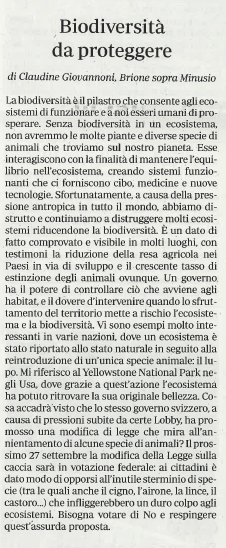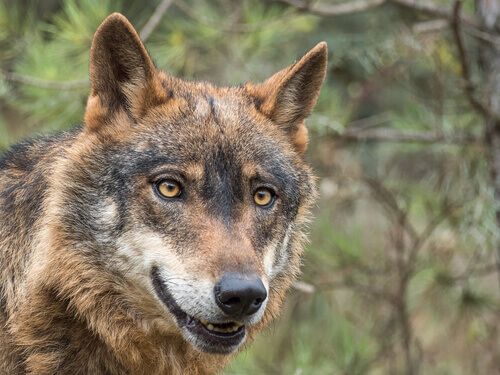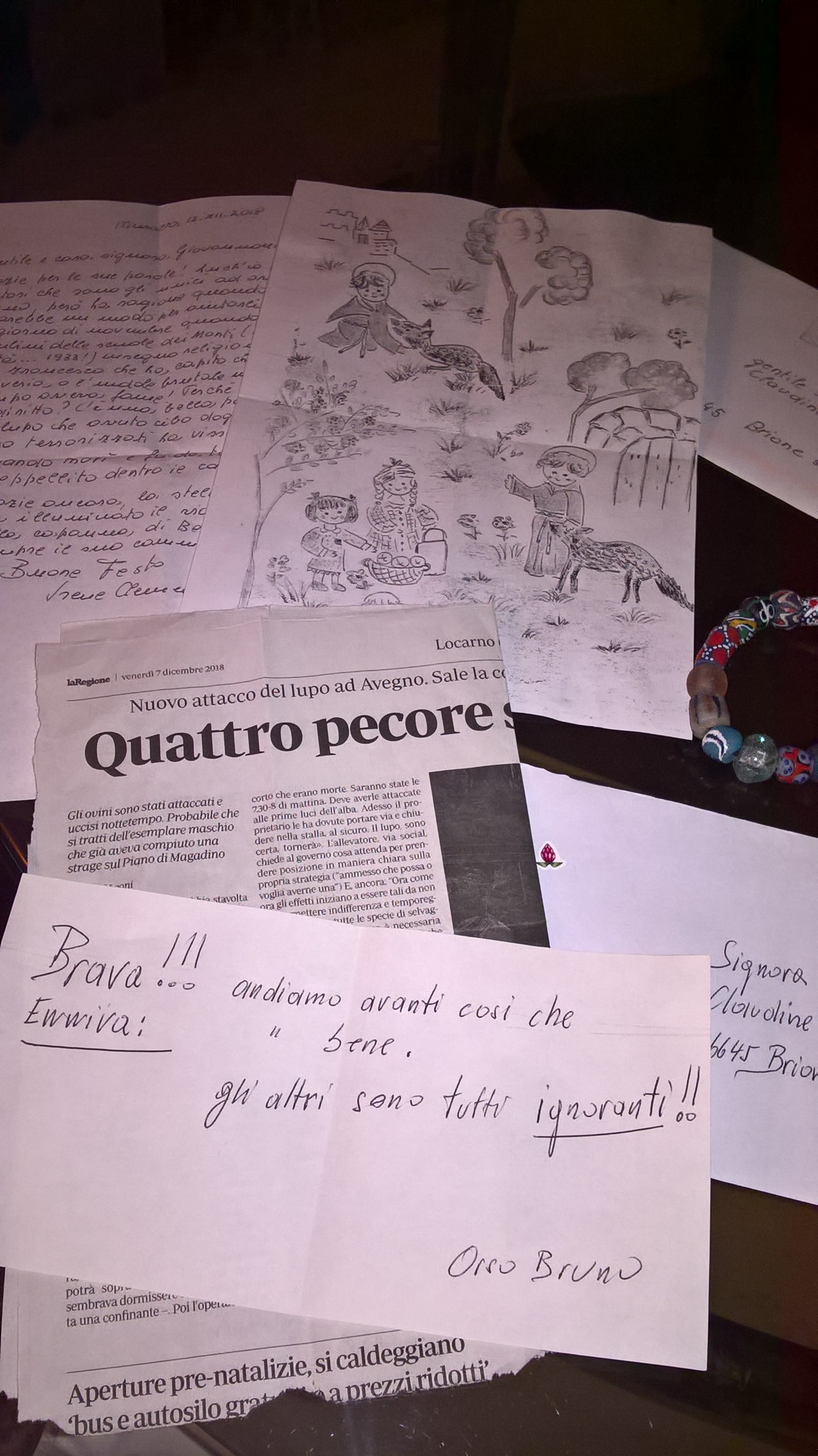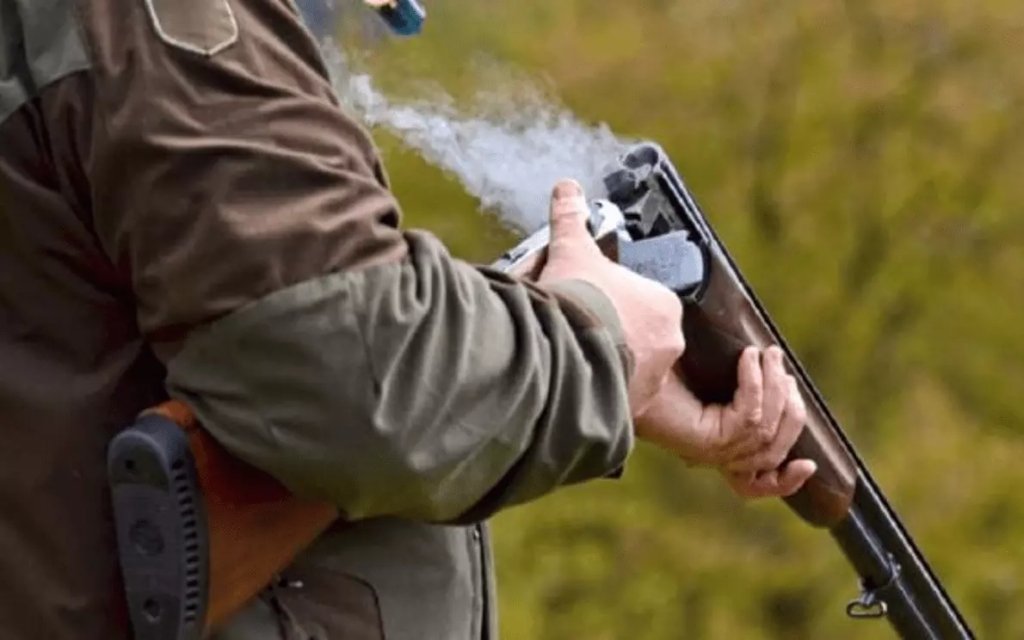
Articolo di Massimo Mobliglia presidente WWF CH italiana 4.5.2022 La Regione
English text below
Fa sempre dispiacere appredere della morte di ovini nel nostro territorio, con tre casi diversi nell’ultimo mese ed è anche comprensibile la manifestazione arrivata in piazza Governo. Le rivendicazioni da parte degli allevatori dovrebbero però essere focalizzate non tanto sull’uso del fucile come mezzo preventivo ma sullo stanziamento di mezzi per attuare concretamente la protezione greggi, nonché sul marketing. Siamo tutti concordi che i prodotti provenienti dalla filiera casearia ovina ticinese siano apprezzati e che la popolazione ticinese possa aiutare concretamente questo settore acquistando maggiormente i loro prodotti, che sono più sostenibili e praticamente a chilometro zero.
Tutte le parti, inclusi i contadini svizzeri, hanno riconosciuto che la presenza del lupo è un indicatore di buona salute della biodiversità, sia dal punto di vista della fauna, ad esempio per l’abbondanza, la salute e la distribuzione deli ungulati, sia per la fauna, ad esempio la salute migliore dei boschi in particolare per la ricrescita della foresta che ha un ruolo essenziale di protezione delle zone edificate di montagna.
I tre recenti casi, come anche dichiarato dall’UCP, hanno mostrato due fatti essenziali: il primo che la protezione greggi deve essere fatta bene e non serve a nulla allestire recinzioni se poi non si elettrificano e non sono complete, mentre il secondo è che gli individui che hanno commesso i fatti erano provenienti da incursioni verosimilmente dall’Italia, fatto che evidenzia quanto una strategia basata sul fucile non faccia altro che spostare di qualche mese i problemi, poiché morto un lupo ne arriva un altro. Vi è da dire che il Cantone Ticino ha fatto un gesto nobile rimborsando tutti gli allevatori anche nei casi in cui non vi erano misure di protezione greggi.
E’ perciò ora particolarmente urgente ed importante che siano stanziati mezzi a sufficienza per poter afrontare la nuova stagione per avere una migliore protezione delle greggi, ma deve altresì essere ricordato che i primi esemplari di lupo sono arrivati in Svizzera, in modo del tutto, naturale, circa vent’anni fa. Purtroppo, questo semplice fatto non è stato affrontato seriamente se ci troviamo oggigiorno con la maggior parte delle greggi svizzere non protett. La popolazione ovina che d’estate sale sugli alpeggi è di ca. 200.000 capi e solo 30.000 risultano protette (vedi sito www.protezionegreggi.ch
Per questi motivi le richieste degli allevatori e dei loro rappresentanti devono essere focalizzate sul finanziamento di tutta una serie di misure di protezione greggi che possano attenuare la pericolosità del lupo ma senza attuare abbattimenti.
Meglio la politica della prevenzione con protezione greggi e della promozione dei prodotti, piuttosto che la politica del fucile!
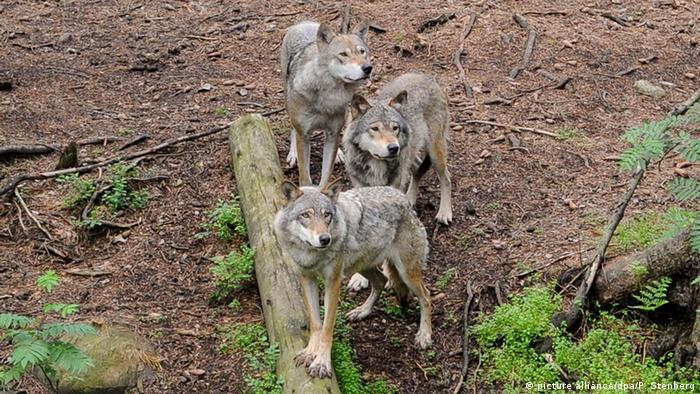
Article by Massimo Mobliglia president of WWF Italian CH 4.5.2022 La Regione
It is always sad to hear of the death of sheep in our area, with three different cases in the last month and it is also understandable that the demonstration arrived in Piazza of the Government. However, the claims by the breeders should be focused not so much on the use of the rifle as a preventive means but on the allocation of means to concretely implement the protection of flocks, as well as on marketing. We all agree that the products from the Ticino sheep dairy industry are appreciated and that the Ticino population can concretely help this sector by purchasing more of their products, which are more sustainable and practically zero-kilometer.
All parties, including Swiss farmers, have recognized that the presence of the wolf is an indicator of good health of biodiversity, both from the point of view of fauna, for example for the abundance, health and distribution of ungulates, and for example the better health of the woods in particular for the re-growth of the forest which has an essential role in protecting the built-up areas in the mountains.
The three recent cases, as also declared by the UCP, have shown two essential facts: the first that the protection of flocks must be done well and it is useless to set up fences if they are not then electrified and are not complete, while the second is that the individuals who committed the facts probably came from raids from Italy, a fact that highlights how a strategy based on the rifle does nothing but move the problems by a few months, since one wolf dies another one. It must be said that the Canton of Ticino made a noble gesture by reimbursing all breeders even in cases where there were no flock protection measures.
It is therefore now particularly urgent and important that sufficient means are allocated to be able to face the new season to have a better protection of the flocks, but it must also be remembered that the first wolf specimens arrived in Switzerland, in a completely natural way, about twenty years ago. Unfortunately, this simple fact has not been seriously addressed if we find ourselves with most of the unprotected Swiss flocks today. The sheep population that climbs the mountain pastures in the summer is approx. 200,000 heads and only 30,000 are protected see website www.protezionegreggi.ch.
For these reasons, the requests of breeders and their representatives must be focused on financing a whole series of flock protection measures that can mitigate the danger of the wolf but without carrying out culling.
Better the policy of prevention with flock protection and product promotion, rather than the policy of the rifle!








